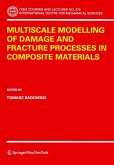Polycrystalline metals, porous rocks, colloidal suspensions, epitaxial thin films, gels, foams, granular aggregates, sea ice, shape-memory metals, magnetic materials, and electro-rheological fluids are all examples of materials where an understanding of the mathematics on the different length scales is a key to interpreting their physical behavior. In their analysis of these media, scientists coming from a number of disciplines have encountered similar mathematical problems, yet it is rare for researchers in the various fields to meet. The 1995-1996 program at the Institute for Mathematics and its Applications was devoted to Mathematical Methods in Material Science, and was attended by materials scientists, physicists, geologists, chemists engineers, and mathematicians. The present volume contains chapters which have emerged from four of the workshops held during the year, focusing on the following areas: Disordered Materials; Interfaces and Thin Films; Mechanical Response of Materials from Angstroms to Meters; and Phase Transformation, Composite Materials and Microstructure. The scales treated in these workshops ranged from the atomic to the microstructural to the macroscopic, the microstructures from ordered to random, and the treatments from "purely" theoretical to the highly applied. Taken together, these works form a compelling and broad account of many aspects of the science of multiscale materials, and will hopefully inspire research across the self-imposed barriers of twentieth century science.
Bitte wählen Sie Ihr Anliegen aus.
Rechnungen
Retourenschein anfordern
Bestellstatus
Storno








